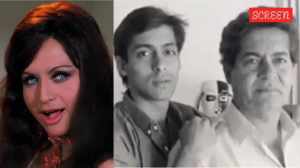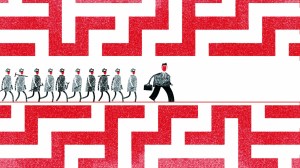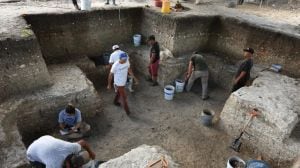Fit for dandiya? Why a basic heart check-up is a must to prevent risk of heart attack
Navratri 2023: Dandiya is a high-intensity aerobic activity. Dr Kedar Kulkarni, senior cardiologist, Ruby Hall Clinic, Pune, offers an advisory for those who have high blood pressure and lead sedentary lives
 If you have had an undiagnosed and an underlying heart condition, a vigorous burst of activity might inadvertently lead to exertion and strain on the heart, which could pose potential risks. (Photo: Freepik)
If you have had an undiagnosed and an underlying heart condition, a vigorous burst of activity might inadvertently lead to exertion and strain on the heart, which could pose potential risks. (Photo: Freepik) There have been a few instances of dancers collapsing during Navratri celebrations in recent years. In 2019, a 25-year-old man had a heart attack while doing the garba in Gujarat. In 2022, a 30-year-old woman collapsed during a dandiya act in Mumbai. What many of us forget is that these dances amount to nothing but a prolonged burst of intense physical activity. And if you have had an undiagnosed and an underlying heart condition, a vigorous burst of activity might inadvertently lead to exertion and strain on the heart, which could pose potential risks.
Why is it crucial to consider heart health before vigorous dancing during the Navratris, particularly for those with high blood pressure or heart issues?
Navratri dances, reminiscent of aerobic exercises, require participants to engage in continuous, energetic movements. During aerobic exercise, the heart rate and blood pressure increase to meet the increased demand for oxygen and nutrients. So for individuals with high blood pressure or underlying heart conditions, any sort of intense exercise, including dancing, tends to elevate blood pressure and increase the heart’s workload, potentially triggering coronary insufficiency in those with existing coronary artery disease. The continuous nature of the dance increases cardiac demand.
That’s why a standard and echo and stress test are recommended before you take up any form of intense activity, particularly when you have had a sedentary life and your body has not been used to it.
What are the potential risks associated with Navratri dances for individuals who have high blood pressure?
There is an increased risk of arrhythmias, which are abnormal heart rhythms that can be caused by stress, exertion and dehydration. This creates an abnormality in electric impulses and stops the heart. This is called a sudden cardiac arrest.
During aerobic exercise, blood flow is diverted away from the heart and towards the working muscles. This can reduce the amount of blood and oxygen available to the heart, especially in individuals with coronary artery disease.
Navratri dances can increase the risk of blood clots in individuals with certain medical conditions such as hypercoagulability (increased ability to form blood clots) and atrial fibrillation (a type of arrhythmia).
Additional risk factors are sleep deprivation, which doesn’t allow the muscles to repair, and dehydration due to sweating, which thickens the blood and makes it more difficult for the heart to pump blood throughout the body.
What signs should we be mindful of during dance sessions?
It’s imperative for participants to be aware of their physical limits during Navratri dances. Signs such as fatigue, breathlessness, dizziness or an irregular heartbeat should not be ignored. If any of these symptoms manifest, it’s vital to take a break, rehydrate and consult a doctor.
What role does hydration, appropriate dance intervals, and choosing suitable dance movements play in promoting heart-healthy Navratri celebrations for individuals?
Adequate hydration is crucial during Navratri dances to prevent dehydration, clotting and maintaining normal blood flow. Drink water before, during and after dancing. Taking regular breaks, especially when feeling tired or breathless, helps in managing heart rate and ensuring the heart is not excessively strained. Furthermore, opting for dance movements that align with one’s fitness level and consulting a healthcare professional before participating in energetic dances can contribute to a heart-healthy Navratri celebration.
While Navratri dances are a joyous and a lively part of the festive season, it’s essential to prioritise heart health, understand potential risks and adopt preventive measures.






- 01
- 02
- 03
- 04
- 05

























